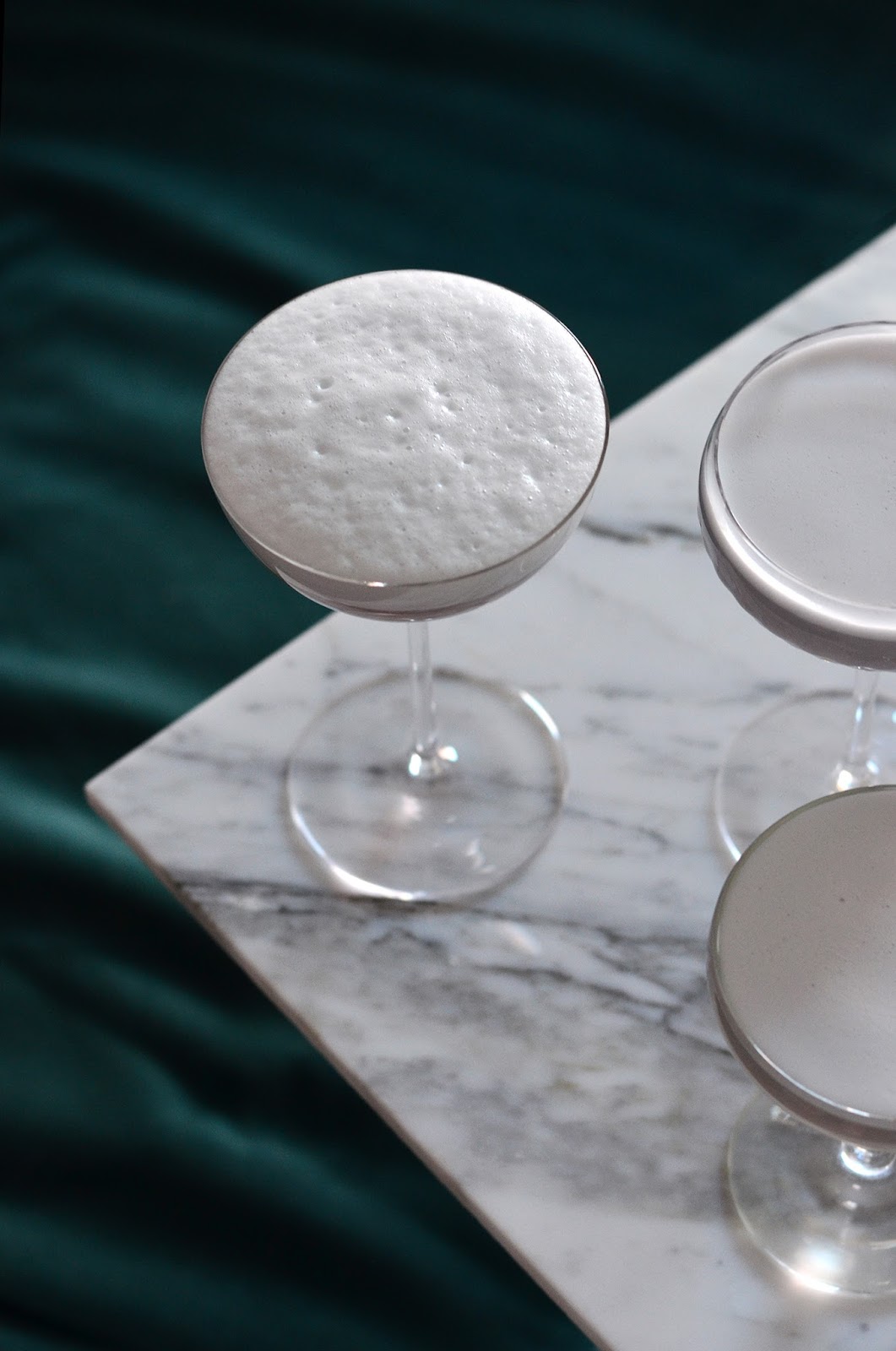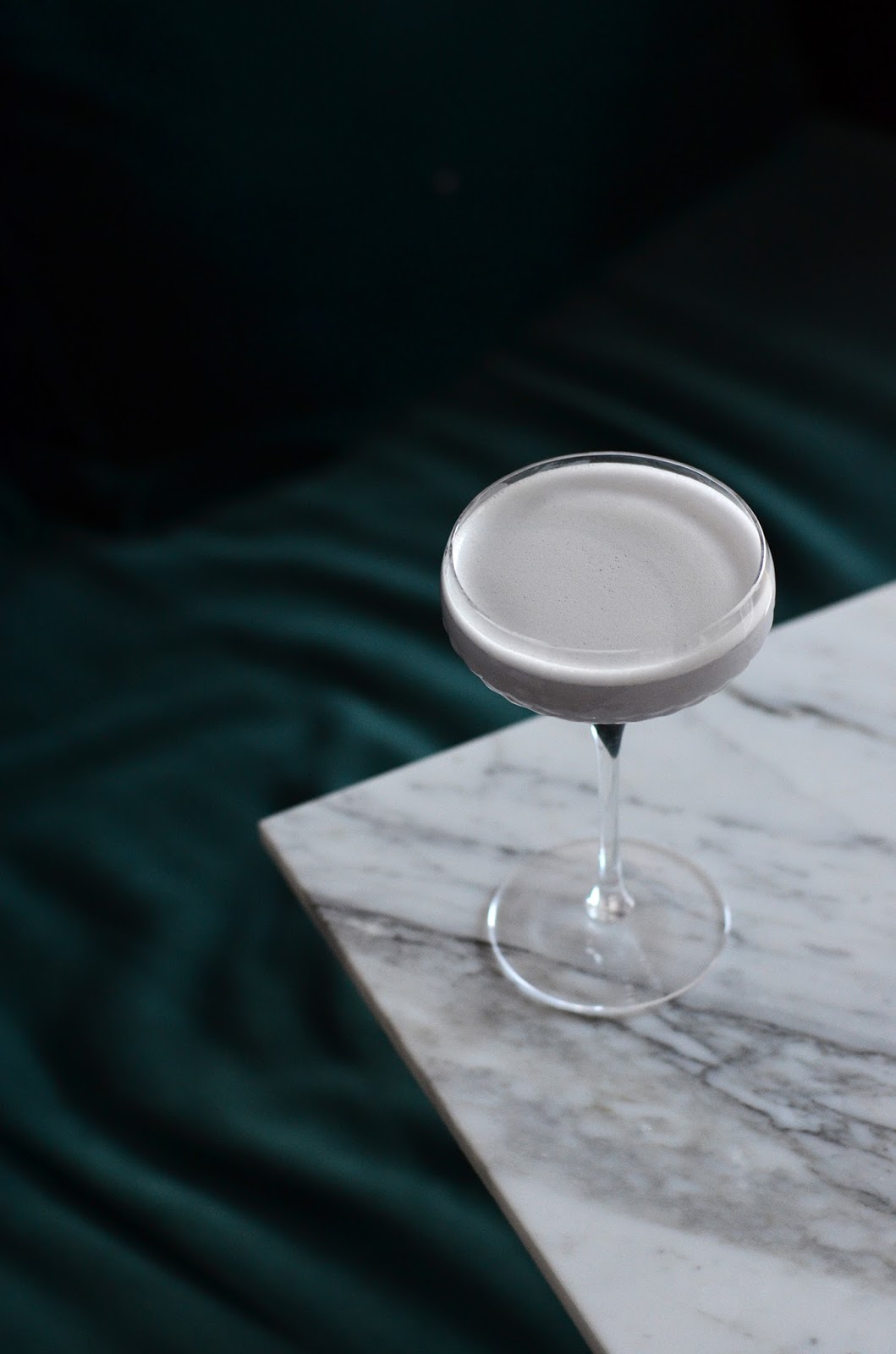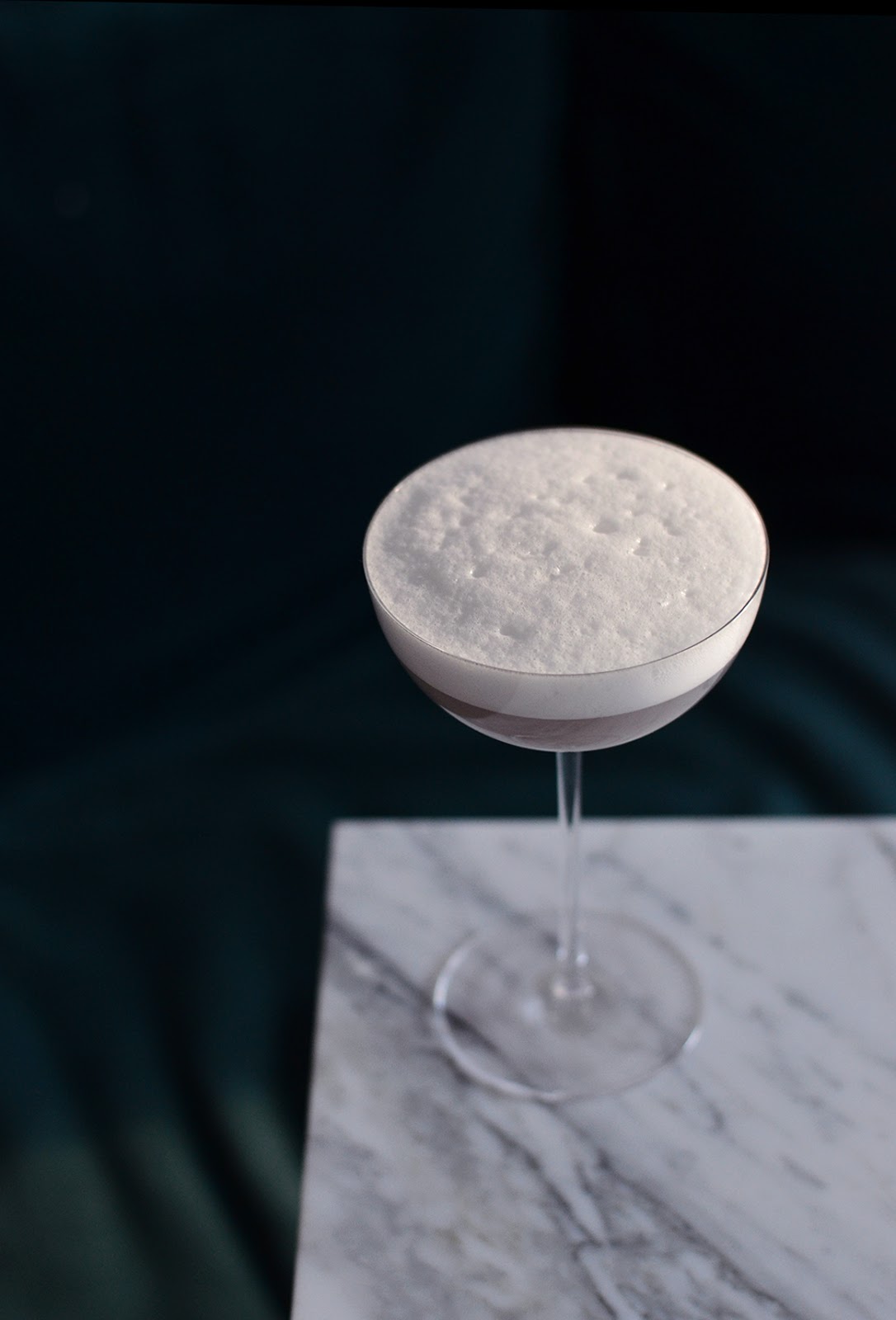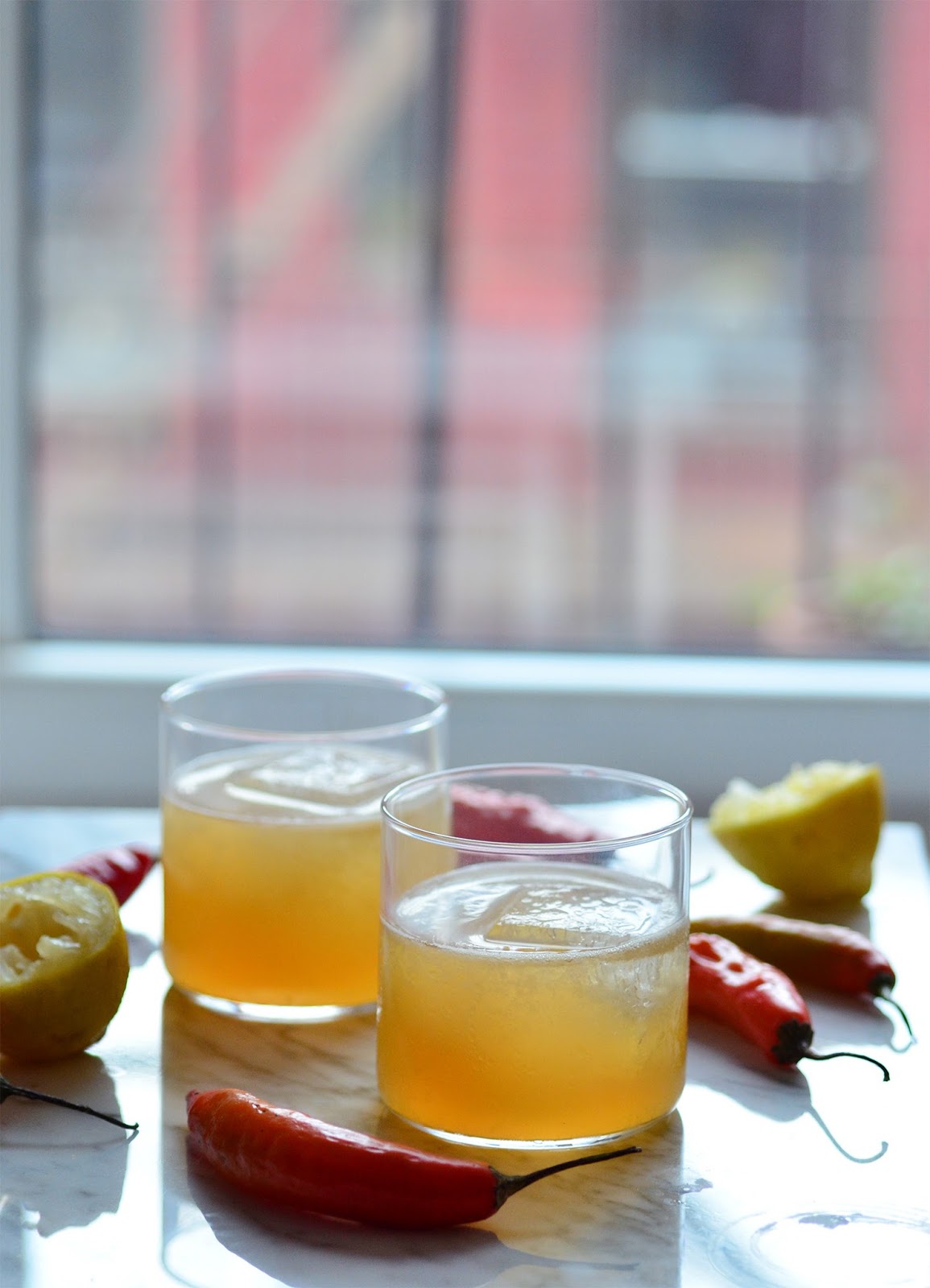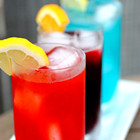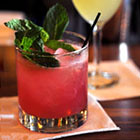A glass of seltzer water and tasty, tasty strawberry shrub.
Initially, the idea of mixing fruit with vinegar might seem a bit strange. The art of making shrubs arose out of necessity: pairing fruit with vinegar is a great way to preserve it, and adding sugar to the mix is a great way to make that fruity vinegar palatable. Shrubs were very popular in colonial times as a way of preserving that ripe fruit flavor without the aid of refrigeration, although the history of vinegar-based drinks goes back much farther: both the Babylonians and the Romans enjoyed drinks made from vinegar mixed with water. The word shrub comes from the Arabic 'sharbah', which means 'drink', and also gives us 'syrup' and 'sherbet'. The more you know!
Now that I think about it it's weird that I didn't get into shrubs sooner, because I love the taste of vinegar, and I love drinking. But when I finally began experimenting with shrubs, earlier this summer, I got really really into it, as if to make up for lost time. I made a strawberry shrub (excellent), a sour cherry shrub (just ok), a tomato basil shrub (weirdly delicious), a sugar plum shrub (so tasty), and a honeydew shrub (which I actually don't like at all but might be coming around to).
Although my process varies a bit from shrub to shrub, here's the one I've used the most, which comes from Food52. It's really very simple, and would work for pretty much any kind of fruit (or veggie) - the sky's the limit.
Cover a pound of chopped or sliced fruit with two cups of sugar in a glass bowl. You'll want to alternate layers of fruit and sugar, and moosh the whole thing up a bit as you go, which will encourage the fruit to release its juices. Cover the bowl and let it sit for two days, or until the sugar has completely melted into a fruity syrup. (Stirring a bit will help to encourage this.) This is called a 'cold processsed' shrub - in this case, the sugar helps to draw out the flavor of the fruit, so you get a nice, richly flavored syrup.
Once all the sugar has melted, the fruit will look a little like this, floating in delicious goo.
Once all the sugar has melted, strain out the fruit, mashing the fruit gently as you strain it to make sure you get all the syrup. Then add two cups of vinegar, and your shrub is ready for consumption. It will keep in the fridge for quite a while, and the flavors will marry as time goes on, so the vinegariness of the shrub becomes less pronounced. (This is what I'm hoping for with the aforementioned honeydew shrub.)
You can create all kinds of flavors by mixing up different kinds of fruits and sugars and vinegars - for the strawberry shrub, I used white sugar and red wine vinegar, with a touch of balsamic. For the sugar plum shrub, I used brown sugar and cider vinegar. Food52 has all sorts of suggestions, all of which I am of course dying to try.
Once you've made your shrub, how do you drink it? This is weird to say, since this is supposed to be a blog about alcohol, but one of my favorite ways to drink shrub is with a little bit of soda water. (Of course, you can also drink shrub on its own, although most people (including me) find the flavor to be a little too powerful.) Strawberry shrub, I've found, is really nice with a dry rosé. And of course, I've been experimenting with mixing it into cocktails, which was really the whole point of making shrubs to begin with. If you follow me on the Instagram (which you should!), expect to see a whole whole lot more drinks made with shrubs. Shrub.



